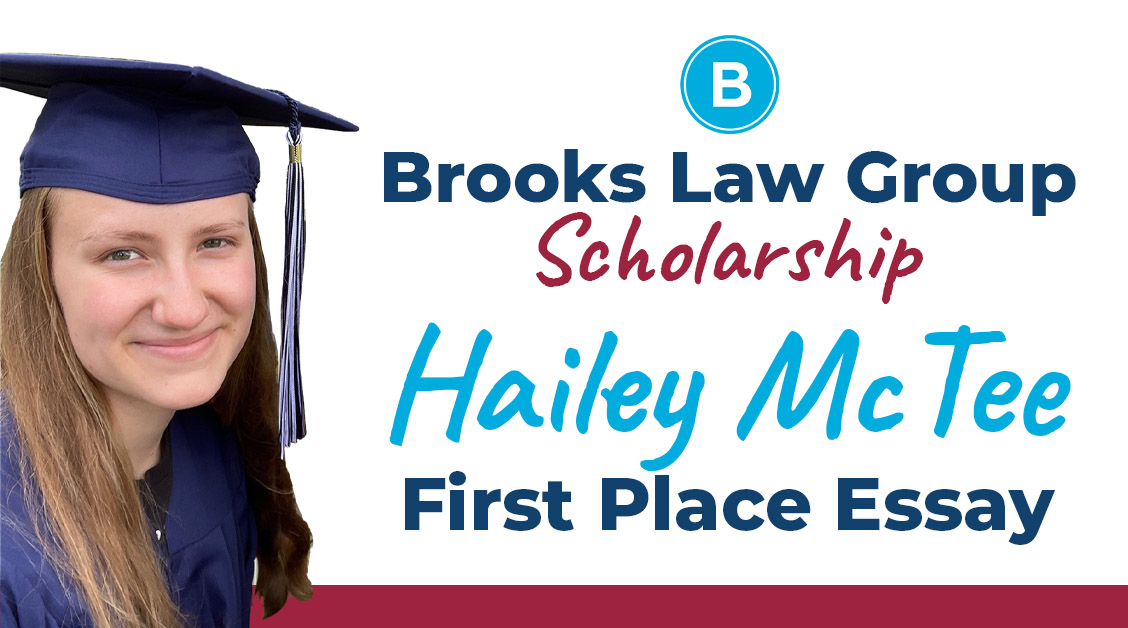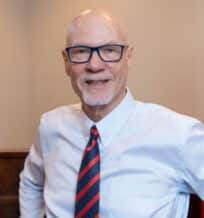
Our Spring 2021 Scholarship essay prompt asked students to write about their thoughts on the student debt crisis, how it’s impacted their college plans, and what they would do to solve it. Hailey McTee is our first place winner, and she will receive a $1,000 scholarship for college. You can read her winning essay below.
Hailey McTee is a graduating senior from College Academy in Davie, Florida, and has earned an Associate of Arts from Broward College. She is president of Broward College’s Philosophy Club, event planner and moderator for Coconut Creek’s Teen Political Forum, a Girl Scout of twelve years, and a member of local college access network, Bridge 2 Life. She is excited to attend the University of Central Florida next fall where she will decide which of her many interests she will pursue. Her mom, brother, and sister-in-law all attended UCF, and she looks forward to being in Orlando near family.
As I near the beginning of my first semester of college, there are lots of things on my mind, like “who will be my roommate?” or “what will I study?” and “what clubs will I join?” But there is a question weighing even heavier: “how am I going to pay for this?” For many students, their answer is student loans. In the fourth quarter of 2020, the Federal Student Aid Office reported that 42.9 million Americans had outstanding student loans totaling $1.56 trillion. As I start to crunch the costs of attending school next fall, I realize I too may be joining the many Americans in student debt.
The increase in tuition has far exceeded the change to wages in the last twenty years. In 2018, the average tuition of a four year institution was $109,428, compared to tuition in 2000 which was $73,252 (a 49% increase, adjusted for inflation). In contrast, median wages of those with bachelor’s degrees or higher decreased by 1.1% (adjusted for inflation) from $67,652 in 2000 to $66,872 in 2018. These numbers indicate that students are expected to pay nearly 1.5 times more for tuition with a decreasing post educational wage.
As mentioned in this article by Forbes, we must also consider costs outside of tuition. The College Board found that on average, 61% of the costs in-state students pay to attend a public four-year university are for non-tuition costs like housing, books, transportation, and other expenses, and this number is 80% for students at two year public colleges. Conversations about the student debt crisis often center around tuition, but loans are taken out to cover these other costs as well.
Even though the numbers tell students that their loans will be difficult to pay off, many still take them. The Aspen Institute found that “in 2018, 54% of young adults who enrolled in college took on some form of debt to pay for their education, double the share of adults who did so in 1980”. One of the reasons is because having a degree greatly increases earnings. When controlling for other socio-economic factors, the Social Security Administration reported that women with bachelor’s degrees make $450,000 more in median lifetime earnings (from ages 20-59) than high school graduates, and men with bachelor’s degrees make $655,000 more. It pays to have a degree, and Americans understand that. The Pew Research Center found that 51% of American adults say a four-year degree program prepares people ‘somewhat well’ for a well-paying job in today’s economy, with 16% saying it prepares people ‘very well’. Positive opinion around higher education was strong enough for those pursuing a bachelor’s degree in 2015-2016 to take out an average of $31,800 in loans.
With all of this in mind, the student debt crisis has definitely impacted my educational plans. In high school I started taking college classes my sophomore year, and junior year I was accepted into a program where I would earn my associate degree during my last two years of high school. I was taking college classes because I enjoyed the challenging curriculum, the passionate professors, and the experience of being on a college campus, but my number one reason was the fact that I would be saving thousands of dollars by earning my degree now rather than later.
It has also affected my goals after high school. Not too long ago I dreamed of going out of state to a small liberal arts college, and I was very close to doing so: I was a finalist for the Posse Scholarship, and was an interview away from a full tuition scholarship to Mount Holyoke College in Massachusetts. When I did not receive said scholarship, I looked to instate schools—in particular University of Florida—where I could use my full tuition Bright Futures scholarship. After being accepted I looked at my award package and found that I would still be taking out a loan of at least $28,900 to attend- something I was not willing to do. Finally, I committed to University of Central Florida, which had given me the largest institutional scholarship out of any of the schools I applied to, and found a much more reasonable cost of attendance. With much of my close family still repaying their student loans many years later, I did not want to be in the same position as them post-graduation. Ultimately, the cost of attendance outweighed all other factors and I made the smart but difficult choice of giving up my dream school (twice).
Avoiding student debt has also pushed me to look for private scholarships. Thankfully, there are lots of resources and opportunities available, including the Brooks Law Group biannual scholarship with first place ($1000) and second place ($250) winners. They even have a guide on how to apply for scholarships (and win) filled with great tips and useful information. Looking for scholarships has become a part time job, and I find I am inadvertently developing many important skills, like how to write effectively, showcase my accomplishments, and be a good interviewee.
The conversation around student debt has impacted my decisions as a high schooler and my decisions for the future, and I fear that without proper changes I will fall into the same problem 42.9 million Americans are facing today. With tuition costs steadily growing, stagnating wages, and large non-tuition related costs, people are recognizing that there is a problem. Now, we are in the middle of a large political discussion centering around the future of student loans in this country.
“Cancel student loans” is a catchy phrase that has been sweeping the U.S., but it fails to address the core issues that have led to the debt crisis in the first place. The solution to the student debt problem will not be one piece of legislation but likely numerous changes by many institutions (Universities, state governments, employers, etc.) over a period of time. I personally do not know the perfect plan to tackle this issue, but if I were in power, I know I would focus on these two goals.
First we need to reduce the amount of debt students are going into in the first place. To do so I would increase the amount of Pell grant aid awarded and expand who can receive it. I would also prioritize giving aid that goes beyond tuition to ensure students can fit the bill for other costs like housing and textbooks. Another important step would be to expand upon existing state and local College Promise Programs that aim to provide scholarships for students in good academic standing. Eventually, I would move us towards a countrywide program that would fund free 2-year degrees and certifications for all low to middle income Americans.
Another important goal would be to change or expand programs designed to help students repay or forgive their loans. For example, there are many “income-driven repayment” plans available for Americans and Forbes explains that the main purpose of all of them is to significantly lower monthly payments and eventually forgive the remaining balance after 20 or 25 years (depending on the plan). One major flaw is that when the loan is forgiven, the amount of the loan is taxed as income, meaning that someone could end up having to pay thousands of dollars in taxes due all at once. Thanks to a provision within the $1.9 Trillion stimulus deal passed by Congress in March 2021, there is currently a pause on loan forgiveness being taxed as income, but it needs to be extended past 2026. I would take further steps to make sure loan repayment and forgiveness plans like the ones detailed above truly help Americans rather than hurt them.
Writing this essay has been an eye opening experience for me. I better understand the student debt crisis and I am more wary of taking student loans. I also now understand the complexities of trying to solve this crisis and I truly believe that this will be one of the biggest challenges that educational institutions, lawmakers, and Americans will have to face in the coming years. I personally, with both my financial decisions and voting power, will try and make sure that I graduate without being haunted by my student loans.













